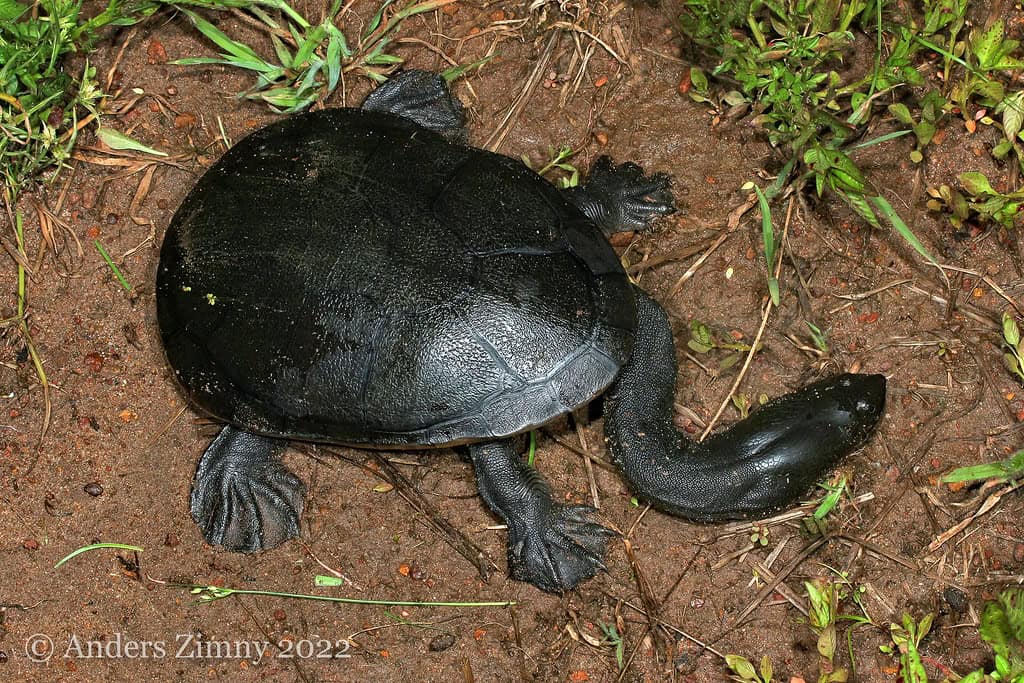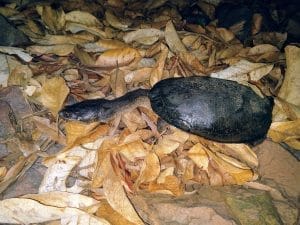Chelodina kurrichalpongo (Kurrichalpongo Snake-necked Turtle)
Home > Turtle Database > Chelodina kurrichalpongo (Kurrichalpongo Snake-necked Turtle)

Chelodina Kurrichalpongo, also known as the Kurrichalpongo Snake-necked Turtle, is a freshwater turtle species native to Australia. It is known for its elongated neck, which can be as long as its shell.
Native To These Regions
Northern Territory (Australia)Native Turtle Species Map – Find Turtles by Region
Scientific Classification
- Kingdom: Animalia
- Phylum: Chordata
- Class: Reptilia
- Order: Testudines
- Family: Chelidae
- Genus: Chelodina
- Species: C. kurrichalpongo
Common Names
- Kurrichalpongo Snake-necked Turtle
- Darwin snake-necked turtle
This Hilarious Turtle Book Might Know Your Pet Better Than You Do
Let’s be real—most turtle care guides feel like reading a textbook written by a sleep-deprived zookeeper.
This one’s not that.
Told from the snarky point of view of a grumpy, judgmental turtle, 21 Turtle Truths You’ll Never Read in a Care Guide is packed with sarcasm, sass, and surprisingly useful insights.
And hey—you don’t have to commit to the whole thing just yet.
Grab 2 free truths from the ebook and get a taste of what your turtle really thinks about your setup, your food choices, and that weird plastic palm tree.
It’s funny, it’s honest, and if you’ve ever owned a turtle who glares at you like you’re the problem—you’ll feel seen.
Identification
Description
Chelodina Kurrichalpongo has a distinctive long neck that it uses to catch prey. Its carapace is usually dark brown or black, while the plastron is lighter in color. The shell is moderately domed and smooth.
Sexual Dimorphism
Males tend to have longer tails and more concave plastrons compared to females. Females are generally larger in overall body size.
Check more turtles from the Chelodina genus
Native Origin and Distribution
Geographical Range
This species is found primarily in the Arnhem Land region in the Northern Territory of Australia. It inhabits freshwater environments such as rivers, swamps, and billabongs.
Preferred Habitat
Chelodina Kurrichalpongo prefers slow-moving or still freshwater habitats with abundant vegetation. It often hides among submerged plants and logs.
Behavior
Feeding Habits
This species is carnivorous, feeding on small fish, insects, and aquatic invertebrates. It uses its long neck to strike at prey swiftly.
Predators
Predators of Chelodina Kurrichalpongo include birds of prey, larger reptiles, and feral animals such as pigs and dogs.
Reproduction
Breeding Season
The breeding season typically occurs during the wet season, from November to April.
Reproductive Method
Females lay clutches of eggs in sandy or soft soil near water bodies. The eggs incubate for several months before hatching.
Conservation
Extinction Status
Chelodina Kurrichalpongo is currently not listed as endangered, but it is considered to be of least concern due to its limited range and specific habitat requirements.
Threats
Major threats include habitat destruction, pollution, and predation by introduced species.
Conservation Measures
Conservation measures include habitat protection, pollution control, and monitoring of population trends.
Economic Importance
This species has limited economic importance but plays a role in the ecosystem by controlling insect populations and contributing to the biodiversity of freshwater habitats.
Interesting Facts
- Chelodina Kurrichalpongo’s long neck allows it to breathe while remaining submerged.
- It can withdraw its neck sideways into its shell, unlike most turtles that retract their necks straight back.
Research Studies
A review of Chelonian type specimens (order Testudines)

About Author
Muntaseer Rahman started keeping pet turtles back in 2013. He also owns the largest Turtle & Tortoise Facebook community in Bangladesh. These days he is mostly active on Facebook.














